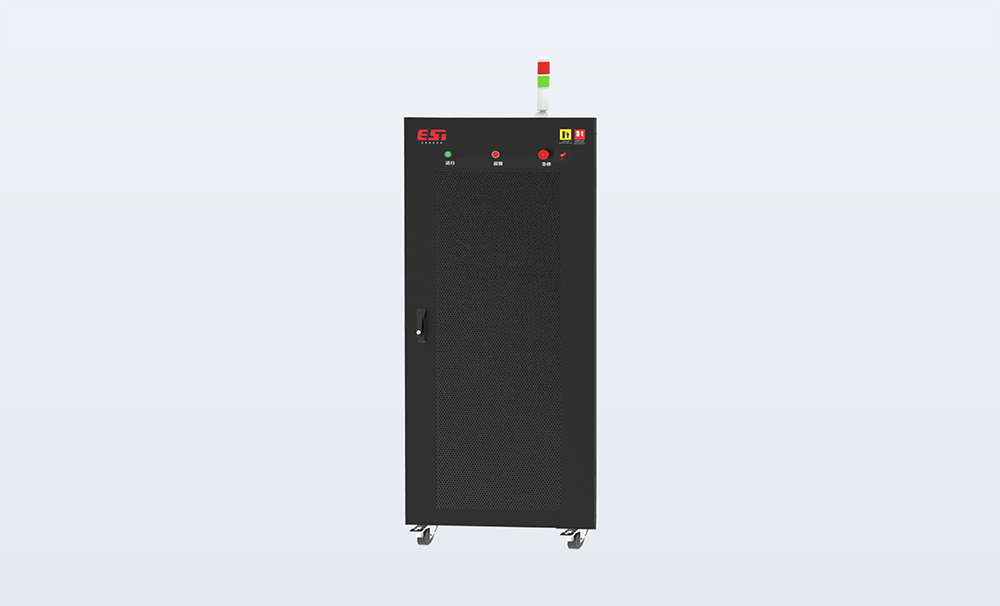
The purpose of battery aging cabinet
The battery module aging cabinet mainly has the following important functions:
1、 Performance testing
1. Capacity detection
By performing multiple charge and discharge cycles on the battery module, its actual capacity can be accurately measured. You can put the newly produced battery module into an aging cabinet for aging testing and observe its capacity changes. If the capacity can still maintain a high level after a certain number of cycles, it indicates that the performance of the battery module is good. For example, in the production of electric vehicle batteries, aging cabinets can help detect battery modules with insufficient capacity and prevent them from entering the market.
The aging cabinet can simulate different usage conditions and environments, such as different charging and discharging rates, temperatures, etc., in order to more comprehensively detect the capacity performance of battery modules. For example, conducting charge and discharge cycles in high-temperature environments can detect the capacity degradation of battery modules under extreme conditions.
2. Internal resistance detection
As the battery module is used and aged, its internal resistance will gradually increase. The aging cabinet can evaluate its performance and lifespan by measuring the internal resistance changes of battery modules under different charging and discharging states. If the internal resistance increases too quickly, it may indicate that the battery module has quality problems or is about to fail. For example, some severely aged battery modules may have internal resistance several times or even more higher than new batteries.
By using an aging cabinet for internal resistance testing, battery modules with abnormal internal resistance can be detected in a timely manner, avoiding their failure in practical applications. For example, in energy storage systems, using battery modules with high internal resistance may lead to increased energy loss, severe heating, and other issues.
2、 Screen for defective products
1. Consistency screening
When producing battery modules on a large scale, differences in production processes and raw materials may lead to certain differences in performance between different battery modules. The aging cabinet can conduct aging tests on multiple battery modules simultaneously, and by comparing their performance parameters during charging and discharging, select battery modules with good consistency in performance. For example, before assembling an electric vehicle battery pack, using an aging cabinet to screen the battery module can improve the performance and reliability of the entire battery pack.
Consistency screening can ensure that battery modules can work together in practical applications, avoiding the impact of poor performance of individual battery modules on the overall system performance. For example, in a solar energy storage system, if the consistency of the battery modules is poor, it may lead to overcharging and discharging of some battery modules, thereby shortening the lifespan of the entire system.
2. Early fault detection
Some potential quality issues may not be apparent in the early stages of battery module use, but after a period of aging testing, these issues may gradually become exposed. The aging cabinet can detect these early faults in advance by accelerating aging, thereby avoiding putting problematic battery modules into use. For example, some battery modules may have issues such as internal short circuits and high self discharge rates, which can manifest as abnormal charging and discharging behavior or rapid capacity decay during aging testing.
Early fault detection can reduce the cost and risk of after-sales maintenance of products, and improve the quality and reliability of products. For example, in the production of electronic products, if battery modules with early failures are used, it may lead to sudden power outages, performance degradation, and other issues during use, affecting the user experience.
3、 Life assessment
1. Accelerated aging test
The aging cabinet can accelerate the aging process of battery modules by increasing the number of charge and discharge cycles, increasing temperature, and other methods. By monitoring the performance changes of battery modules under accelerated aging conditions, their lifespan in actual use can be predicted. For example, after a certain number of accelerated aging tests, if the capacity of the battery module decays to a certain extent, its approximate lifespan under normal usage conditions can be inferred. Accelerated aging testing can evaluate the lifespan of battery modules in a relatively short period of time, providing important basis for product development, production, and quality control. For example, in the development process of new battery modules, using an aging cabinet for accelerated aging testing can quickly understand their lifespan performance, thereby optimizing design and production processes.
Simulate the actual usage environment.
The aging cabinet can simulate various practical usage environments, such as different temperature, humidity, vibration, etc., to evaluate the lifespan performance of battery modules in different environments. For example, in outdoor energy storage systems, battery modules may be affected by environmental factors such as high temperature, low temperature, and humidity. By simulating these environmental conditions in the aging cabinet, we can understand the changes in the lifespan of battery modules during actual use.
Simulating the actual usage environment can help you better understand the reliability and durability of battery modules, providing strong support for the application and promotion of products. For example, in the field of electric vehicles, understanding the lifespan performance of battery modules under different climatic conditions can provide users with more accurate predictions of range and service life.




